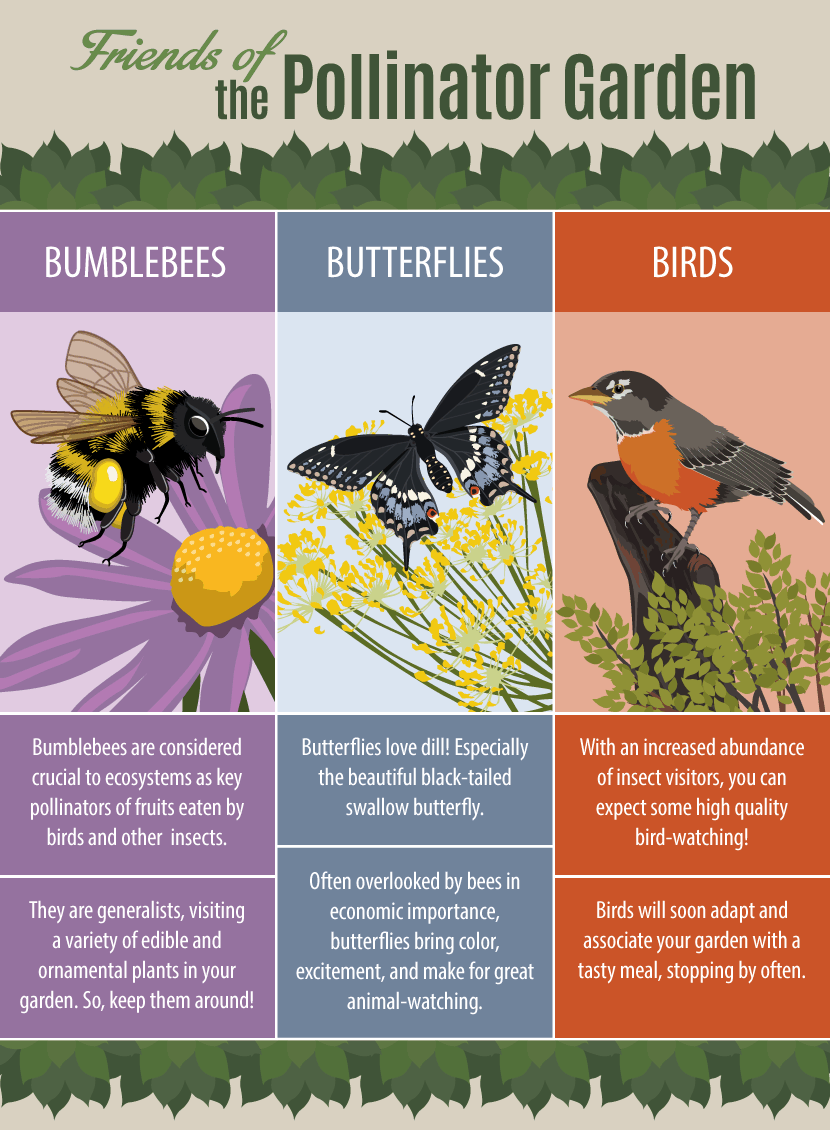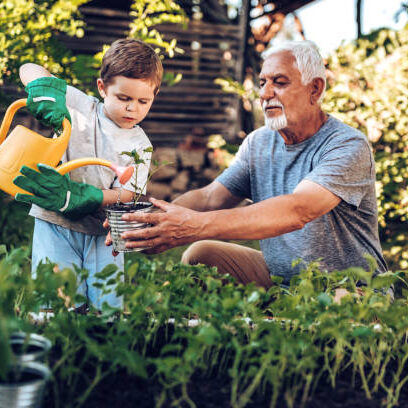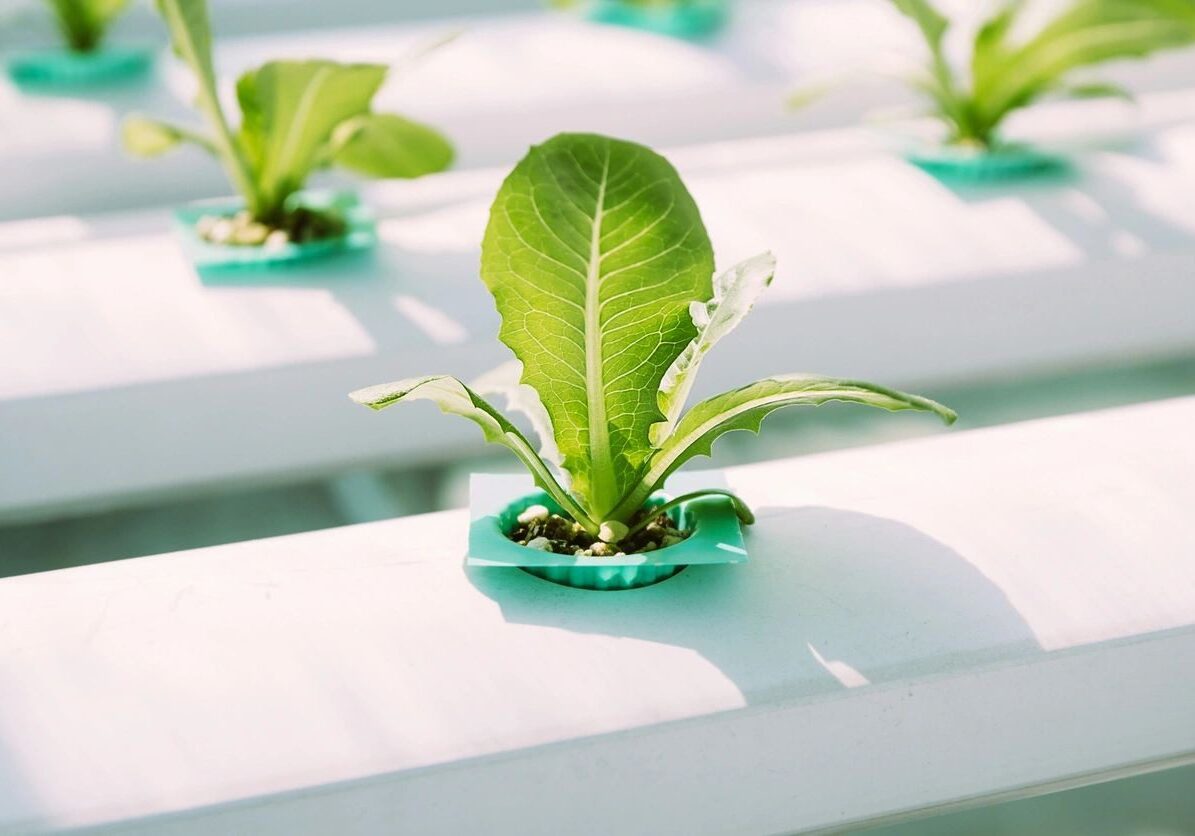A Down-to-Earth Bonding Experience With the Younger Generation
Gardening with grandchildren is a beautiful experience of connecting to earth from planning to harvest. It is a project with a purpose. From sowing the seeds or setting out the plants, children can be involved in the whole process. In climates where it is necessary to wait until May, many happy hours can be spent with seed catalogs during the winter and with cutting and pasting garden plans. Sharing the adventure and sharing the abundant harvest with neighbors or food shelves give the garden a special meaning.
As grandparents retire and join the ranks of senior citizens, it is important to choose a garden that works for you and your grandchildren. That is what makes it “Grand-Gardening”: a grand experience together, not hours and hours of heavy labor. As long as plants have 6-8 hours of sunlight, decent soil, and enough water, the garden will be a success. When grandchildren are small, start small in the ground or in containers with a few of your favorites. Let them grow up experiencing and expecting the wonder. Then they will be gardeners for life.

Spending Time With Grandchildren in Gardens Can Teach Us Many Life Lessons.
Patience is part of every step! Waiting for the end result and watching for all the changes bring joy along the way. Understanding the balance of nature teaches tolerance, bad weather, and crop damage helps children handle disappointment and provides opportunities for problem-solving. A job well done and seeing the rewards of their work bring pride and self-esteem.
There are many ways to garden. I grew up with a mother who could grow anything without adding much to the soil except for cow manure. Her kind of gardening was fun for us because she planned early, middle, and late summer menus around “what was ready to eat.”
I can still hear her say, “Let’s go pick a salad” or “Who wants to pick a soup?” And I remember the wonder of peeking under the potato vines and taking just a few tiny potatoes for one of the early summer dinners: creamed peas with the skinny little carrots from the thinning of the rows and the baby potatoes.
Planting a Salad
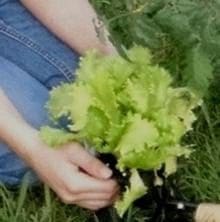
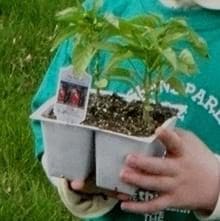
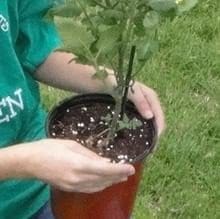
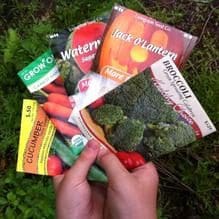
Keep a When Journal:
- When did you plant?
- When did it come up?
- When is each vegetable ready to harvest?
And Then Add:
- How much did the “crop” yield?
- How did you use it? Raw or cooked? Include new recipes.
- Did you like it?
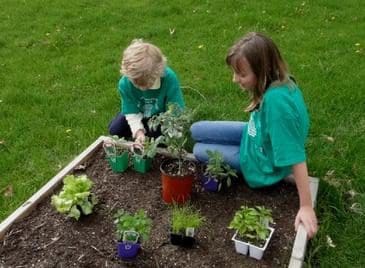
This Information Will Help You Plan for the Next Year.
**Note: If you live in a year-round garden climate, make a chart for the whole year, so you can keep track of when new seeds should be started and other garden chores to include. Northern gardeners have to do it all in a much shorter season.
The 4 Ps apply to everyone: planning, preparing, planting, and picking. Whichever style of garden you choose, preparation is the most important and the most work!
Plant what kids will eat, but introduce new vegetables for taste tests. There is always a “way” to invite cautious eaters to be more adventurous! Make boats out of peapods, and encourage creativity by having them design faces on pizza (or on their plates) out of garden treasures.
Different Ways To Use Vegetables
(Broccoli hair, cucumber eyes, tomato nose and a big red pepper smile can combine to make a veggie dip, salad toppings, or vegetable soup!) Make a list of all the different ways you can use each vegetable. Check out our Vegetable Soup Garden, Salsa Garden, and Spaghetti Garden listed below.
Every garden store and website for gardens has mountains of material to help choose products and supplies and find answers to any of your questions. You can spend lots of money or almost nothing at all. All the information for every part of gardening is already out there. You can go online and find hundreds of sites for kids’ gardening ideas. Green Grandparents does not sell or recommend any specific products. We suggest “tried and true” methods that work with the most effectiveness and the least amount of work. We want you to enjoy the garden together! Our 3 top choices for grand gardening are companies that have made a commitment to helping solve the world hunger problem.
Cultivating Food…Connecting Minds…Harvesting Hope
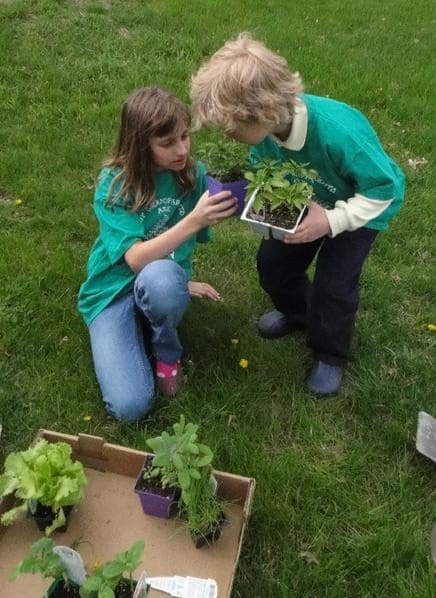
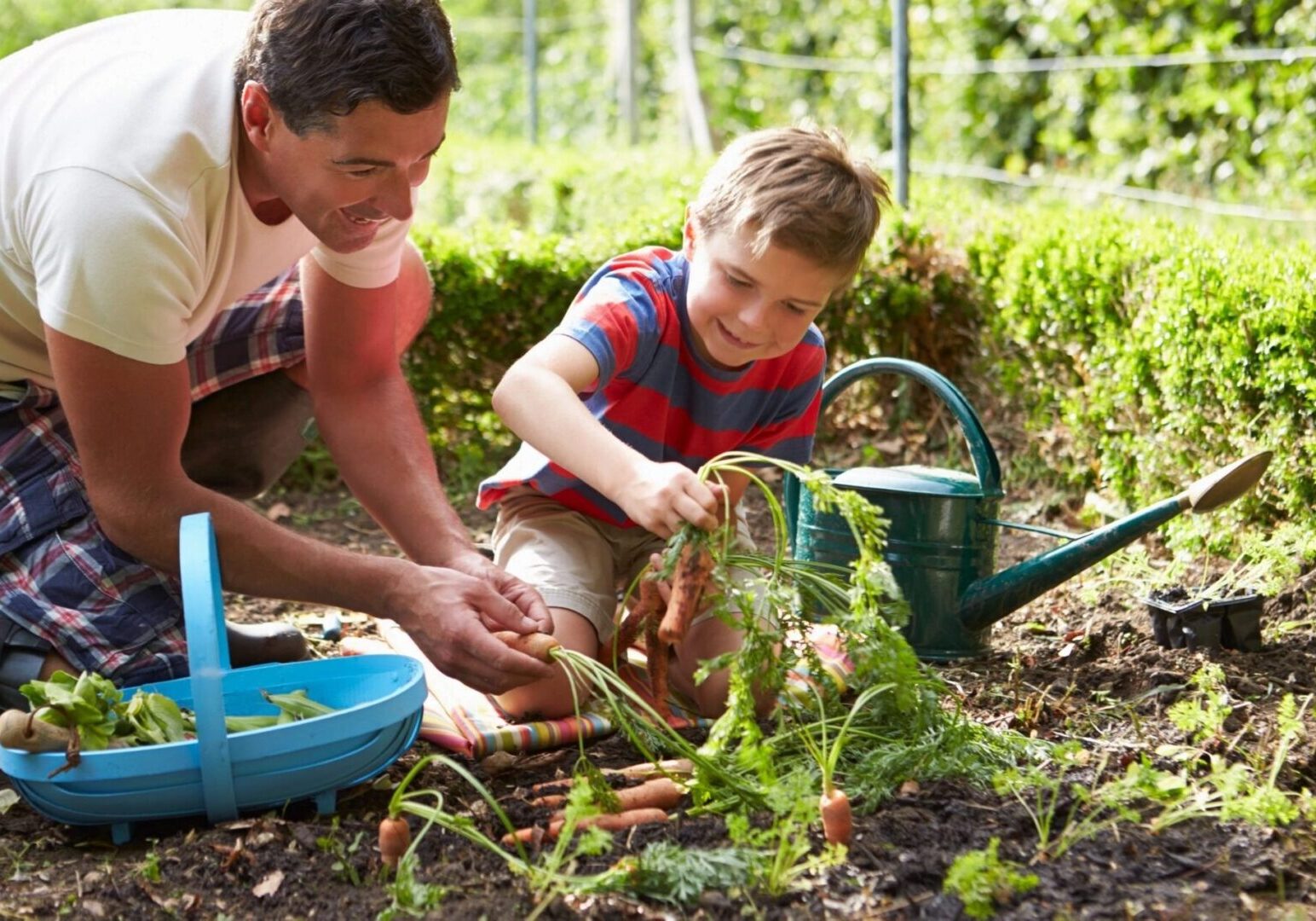
Square-Foot Gardening
Square Foot Gardening is a system of raised beds Square Foot Gardening is a system of raised beds made of wooden boxes 1ft x 1ft that can be used separately or joined together in 3ft or 4ft square garden. Each person can plant and take care of their own section. With Square Foot Gardening you will get 100% of the harvest with only 20% of the space, 10% of the water, 5% of the seeds, and 0% of the fertilizer compared to a conventional row garden. And a BIG plus: Almost no work and no weeds.

Earth Box Gardens
From earthbox.com: "Since 1994, EarthBox® has been the pioneer in container gardening systems. The patented EarthBox® was developed by commercial farmers and proven in the lab and on the farm. Our maintenance-free, award-winning, high-tech growing system controls soil conditions, eliminates guesswork and more than doubles the yield of a conventional garden…with less fertilizer, less water and virtually no effort!"
We used this system last year on our deck with amazing results, and no work after the planting was done. The soil can be reused each year, and because of the water reservoir, we could be away without the worry of watering. The planters have wheels, so the “garden” could be moved easily to avoid high winds and hail.
Planting a Rainbow
- Red - Tomatoes, peppers, radishes, strawberry
- Orange - Pumpkins, squash, peppers, carrots
- Green - Beans, peas, lettuce, peppers, zucchini, squash
- Blue - Blueberries
- Yellow - Summer squash, corn,
- Purple - Eggplant
Mix and Match
Vegetable Soup
Choose your favorite vegetables and plant a soup!
- Tomatoes - Red, yellow, orange, green
- Peppers - Red, yellow, orange, green
- Squash - Green, yellow, orange
- Cauliflower - White, lime green, purple, orange
- Potatoes - White, yellow, purple
- Beans - Green, yellow, purple
- Eggplant - Purple, white
A Rainbow Bouquet
Plant a garden of edible flowers to use in salads and garnishes
Designing Beautiful Sustainable Gardens www.herebydesign.net/10-edible-flowers-you-can-grow-in-your-garden
Everyday favorites: lavender, thyme, dill, cilantro, day lily, squash blossoms, basil, chives, and nasturtiums www.thishealthytable.com
Go to menu and search for Edible Flowers
8 Edible Flowers That Taste Great in Salads: www.earth.com search Edible Flowers
THE SPRUCE https://thespruce.com>gardening
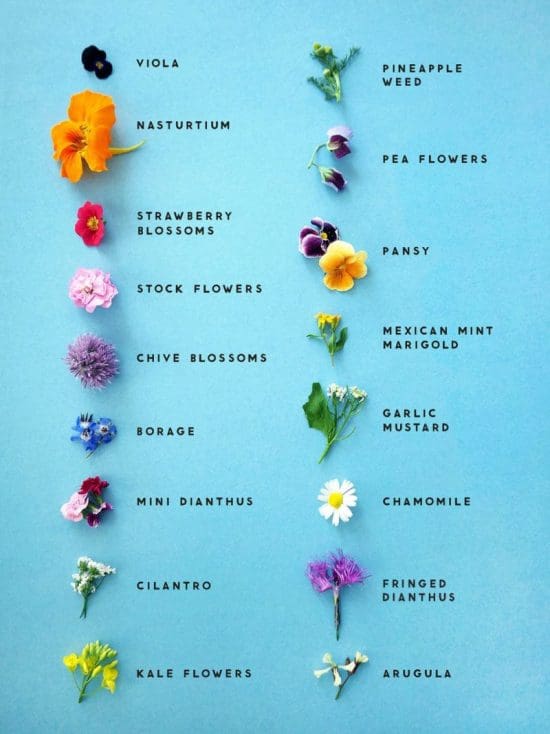




Spaghetti Garden
2 spaghetti squash plants
3 tomato plants
4 basil plants
1 row of green onions
1 row of garlic
2 parsley
1 oregano
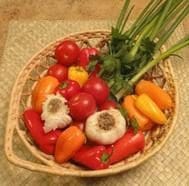
Salsa Garden
4 tomato plants
4 different kinds of peppers
3 sweet 1 hot
1 row of green onions
1 row of garlic
cilantro
parsley
Kitchen Scraps Gardens
Dig In! 12 Easy Garden Projects Using Kitchen Scraps Kari Cornell
Grocery Store Gardens: by Michelle Marsh
How to Grow Beautiful, Tasty Indoor Gardens from Grocery Scraps
No-Waste Kitchen Gardening Katie Elzir-Peters
Regrow Your Veggies: by Melissa Raupach
Growing Vegetables from Roots, Cuttings and Scraps
***** If you read the Publishers Notes on books from online booksellers before you buy, you can see what you want to do and how to do it!
MORE RESOURCES for Gardening with KIDS:
How to Plant a Child-Friendly Garden HGTV https://www.hgtv.com
Everything You Need to Know About Starting a Garden with Children:
https://www.planetnatural.com Click on Gardens on task bar Search Gardening With Kids
Garden-Based Activities and Garden Lesson Plans
Click on Gardening Toolbox and choose Garden Activities
Planting for Pollinators
Encourage your grandchild’s sense of wonder at the connection to the natural world and invite butterflies and bees into your landscape by planting a pollinator garden. A pollinator garden provides a colorful array of nectar-producing plants that attract butterflies, bees and hummingbirds It also offers plants to feed the caterpillar stage of the life cycle of butterflies.
With the appropriate plantings, this garden provides opportunities to share and explore the intricate relationships of plants and pollinators.
PLANTING FOR POLLINATORS
Simple steps to create a pollinator-friendly garden around your house

Information about the 3 Friends of Pollinators all starting with the letter B
Butterflies, Bees and Birds
Kids for Saving Earth: kidsforsavingearth.org
Click on Menu: Choose EDUCATION INTO ACTION PROJECTS
Monarchs Matter and What’s Happening to our Honeybees?
kidsgardening.org Ten Tips to Help Pollinators Grow Milk Weed to Help Monarchs
INFORMATION and SUPPLIES to help you create a butterfly garden and help you raise Monarchs available at Monarch Butterfly Garden : https://www.monarchbutterflygarden.net
You can help your garden – and the ecosystem in general by becoming a welcoming host to some of the hardest working horticulturists around. These gardeners are very different from each other, but have three things in common – they love flowers, have names that start with “B,” and are winged.
Birds, Bees and Butterflies are essential to the process of pollination, and a few strategic choices in your garden will help them thrive and improve your space as well. Clink link for list of plants
https://www.flagstaffbusinessnews.com/three-bs-garden-success
Top 10 Flowers That Attract Bees https://www.birdsandblooms.com
HUMMINGBIRD HELPERS

https://kidsgardening.org/resources/garden-activities-hooked-on-hummingbirds/
Everything you want to know about Pollinator Partners
WATCHING THE MAGIC







